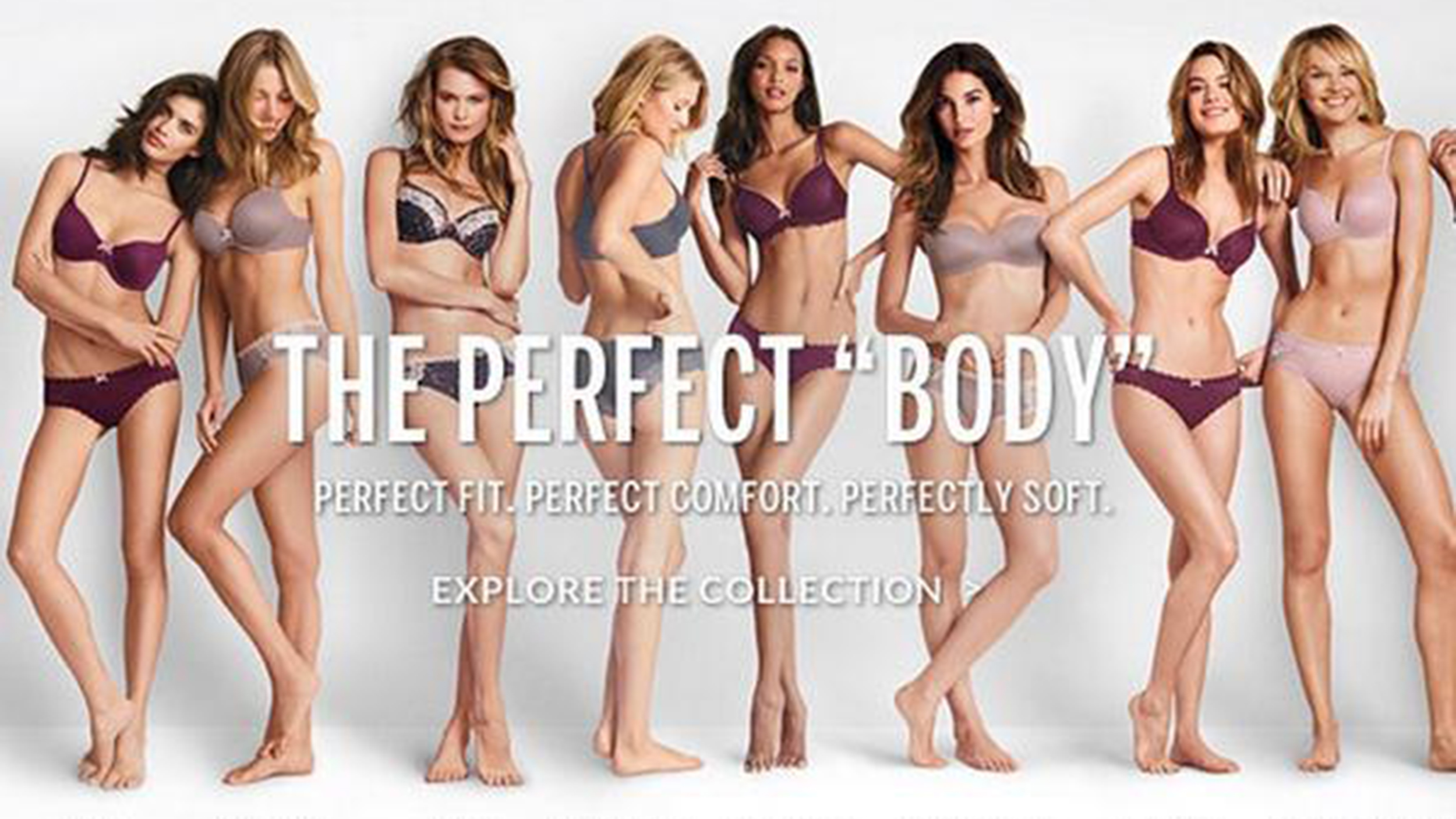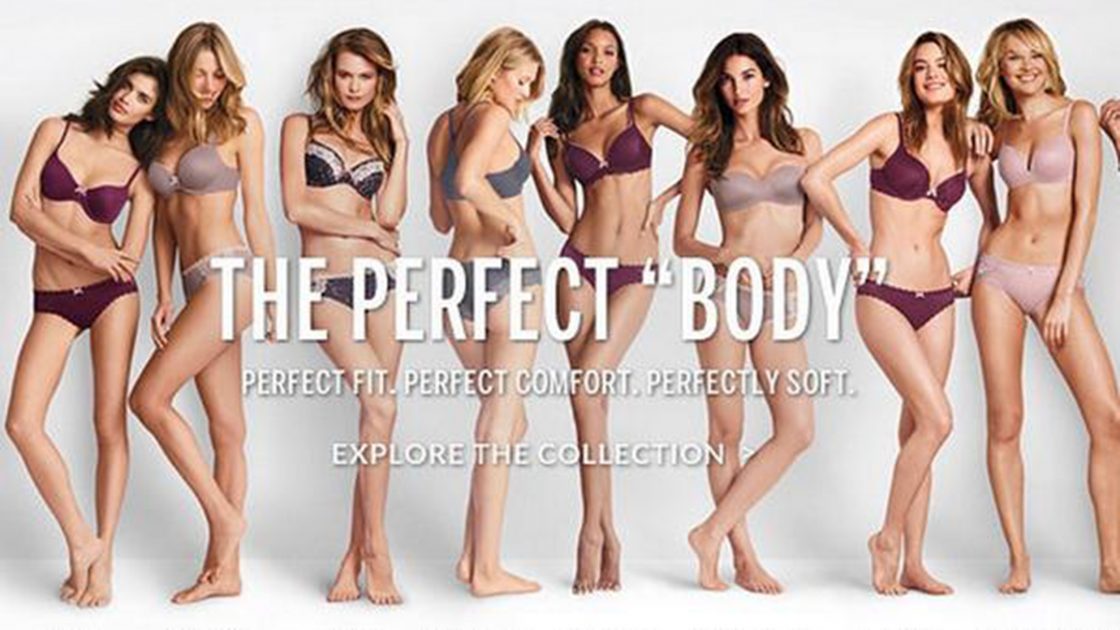
By Emily Passmore, Media Management, ’22
A few years ago, the lingerie retailer, Victoria’s Secret, launched the “Perfect Body” campaign. This campaign centered around Victoria’s Secret’s new “body bra” designed to perfectly fit every body type. One advertisement used in this campaign featured several tall, thin models wearing the new lingerie with the words “The Perfect ‘Body’” displayed overtop of the image.
The imagery in this advertisement alone is extremely powerful and influential. Like those in countless other advertisements in similar industries, the models in this image are all tall, thin, and toned. These women, and their bodies, are objectified, portrayed as beautiful and desirable, and esteemed as an ideal. As if the imagery in this advertisement wasn’t impactful enough, the words “The Perfect ‘Body’” included in this advertisement only serve to reinforce what consumers have already been led to believe is true. That is, the perfect body is a thin body.
Therefore, while on the surface, this advertisement may simply appear to be selling Victoria’s Secret’s new lingerie line, this advertisement is actually selling an impossible beauty standard. The lack of body diversity and representation in this advertisement aligns with hegemonic beauty beliefs and helps establish an impossible standard of beauty. In an industry that profits off consumers’ insecurities, Victoria’s Secret ultimately benefits from this, as consumers, unsatisfied with themselves, buy this lingerie in hopes of somehow achieving this impossible beauty standard.
While countless other advertisements also influence viewers in similar ways, they usually appear to do so in more subtle, subconscious ways. This advertisement, however, boldly declares a tall, slender body to be the “perfect body”. Whether or not Victoria’s Secret set out to do this, or whether they were simply trying to make a pun about their line of lingerie referred to as “body bras”, Victoria’s Secret is shaping the minds of women and girls in potentially harmful ways.
One of the largest ways in which this Victoria’s Secret advertisement has the potential to influence women and girls is by altering their perceptions and beliefs regarding beauty standards. Due to the lack of body diversity in their advertisements, certain body types are revered above others and pronounced the ideal or “perfect body”. Women are then left to compare their bodies to this ideal and made to feel less for being anything other than “perfect”. This practice can greatly contribute to negative self-esteem and body image, as well as other dangerous beliefs and behaviors.
This advertisement ultimately speaks volumes about today’s society, where toxic body image is pervasive and where women are often objectified, and their worth determined by their bodies. Women are led to believe, whether deliberately or subconsciously, that their worth can be measured by something as insignificant as the numbers on a scale. This can result in pressure on women to reach an impossible beauty standard, to be “perfect” and therefore, thin.
Victoria’s Secret ultimately received enormous backlash for this campaign and quickly changed the campaign’s slogan to “A Body For Every Body”. However, the image remains the same. For better or worse, this imagery in Victoria’s Secret’s advertisements continues to shape societal expectations and beauty standards for women.
